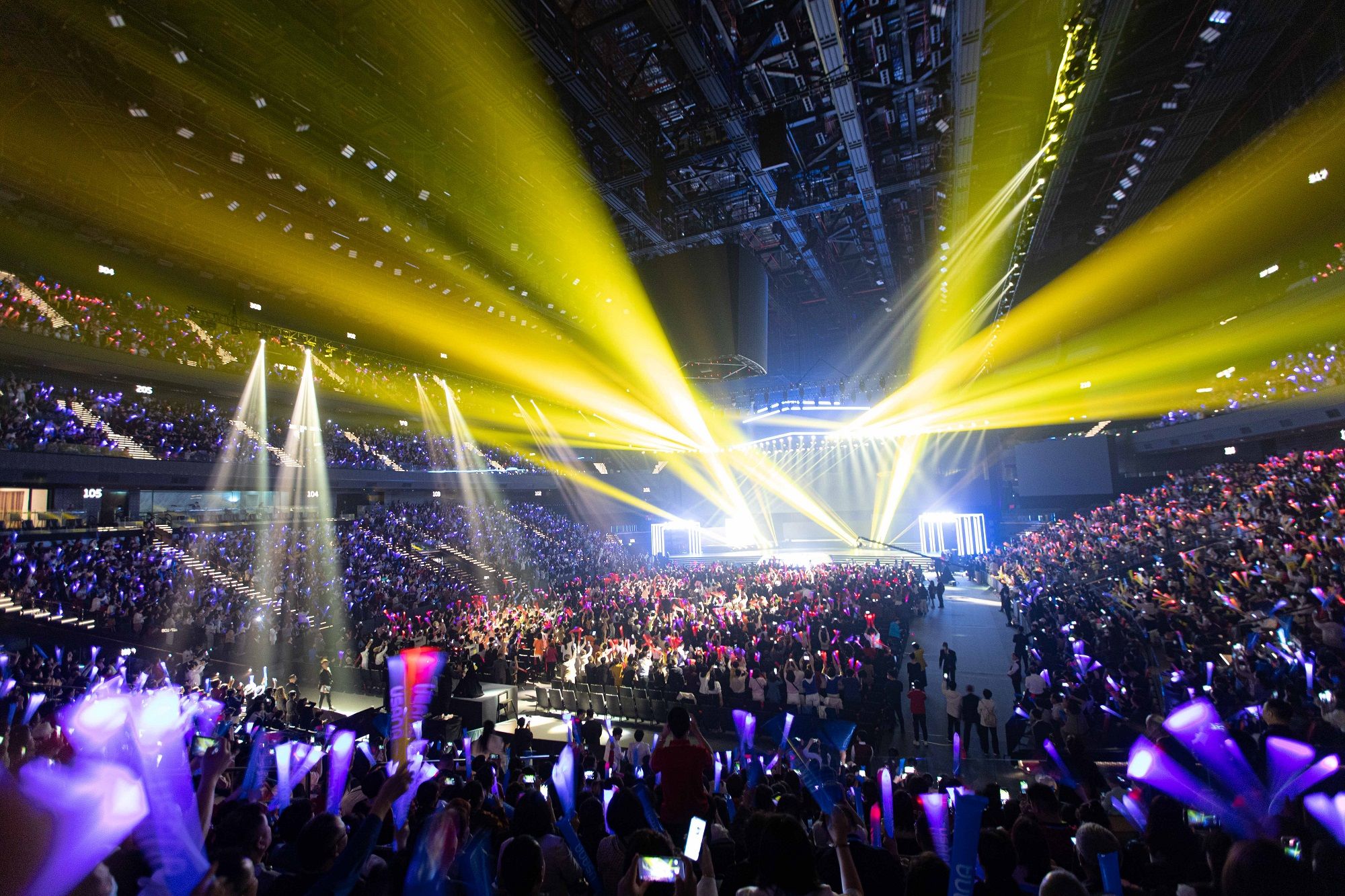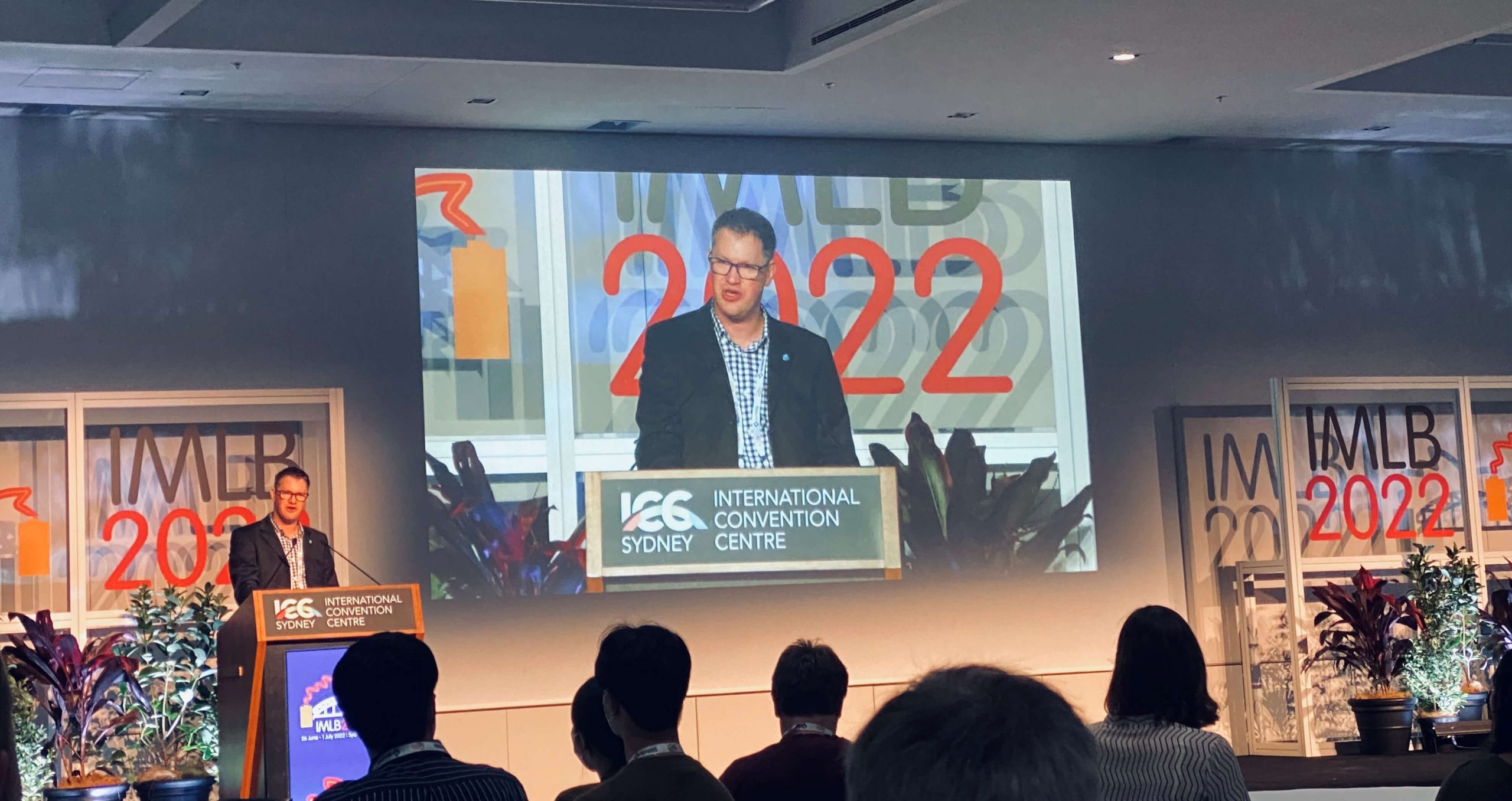Anyone who has attended a conference, sales meeting or seminar probably has a secret stash of printed speaker slides. Many of us follow these slides with our eyes instead of listening intently to the presenter – and afterwards they are stuffed in an office drawer and forgotten. This, as any presentational expert will tell you, means the speaker has failed in the most basic objective: to combine technology and narrative to convey memorable information.
“Most PowerPoint slides are ineffective, and quite often they are really bad,” says Nick Oulton, Founder of M62, a visual communications and presentation development company with bases in New York, Singapore and Liverpool. “If your slides are full of bullet-pointed text that your audience can read for themselves, they won’t work. The audience reads and ignores the presenter.”
Oulton says that boring – or downright bad – presentations are compounded by the way they are presented, and also by poor utilisation of technologies like PowerPoint and Keynote. He notes: “Few presenters take the time to learn how to use these software packages properly, resorting instead to simple bullet point and linear text-based presentations.” Essentially, they end up reciting the same information that is being simultaneously shown on a screen and may have been handed out as printed slides.
M62 runs and delivers training conferences for clients, and its studies of over 3,000 people reveal that, on average, bullet-point slides yield a 15 to 20 percent recall of information after just an hour. Yet most presentations are given in this ineffectual way. “It is possible to use PowerPoint to communicate effectively, but only by using it in a more considered way,” says Oulton. “Effective presentations are about clear communication, seamlessly delivering the right information, in the right way, to captivate the audience.”
Going visual
Wider technological awareness also means presentations are evolving, says Oulton. “Your audience can read for themselves, so you need to use diagrams, charts, graphs and animation to bring the information alive.” A useful trick is to “build” slides as you are talking. Oulton gives an example of steadily unveiling an onscreen timeline for a product’s history. “The presenter controls the visual development of this timeline as he speaks, rather than presenting all the information at once,” he says.
Developing the visual nature of slides while presenting is an active example of M62’s trademarked Visual Cognitive Dissonance (VCD), a way of arousing the Reticular Activating System in the brain to compel the audience to engage with the presenter. “We have designed in excess of 225,000 PowerPoint slides, and the one thing they have in common is they do not make complete sense until the presenter either builds or explains them,” says Oulton.
Oulton, who has also developed the killerpresentations.com website and published a book of the same name, is also joining forces with academia to build the company’s intellectual property. M62 has recently funded academic research at the University of Central Lancashire into ways of using VCD to improve audience attention and manipulate the information the presenter wants them to remember.
Today, we live in an “active image” world. All around us are HDTV and ad screens, smartphones and tablets, animated store displays – and even banks are using touch-screen walls to enhance the customer experience. Memorable presenting is also utilising new visual technologies that give a real glimpse of the future.
“For the last 150 years, the world has been told film and video projection require blackout rooms to achieve the best image quality,” says Kevin Andreassend, founder of Auckland-based ICE AV Technology. No longer. ICE AV’s Digital Daytime Screen can be used in well-lit rooms to achieve digital-quality, large-sized images.
The screen applies the same concept as a pair of reading glasses, having both a horizontal and vertical curvature that enable it to capture light from a projector, magnify and direct it back to the audience. “This enables the user to deduce the optimum location for the projector to achieve significantly enhanced image quality, and to pinpoint the optimum seating positions for the audience to enjoy it,” says Andreassend.
The concept of enhanced projector screen efficiency seems to be lost on a lot of people until they see a demo, says Andreassend. “On a recent radio talk back, I was asked, ‘Why would you want a projector. I assumed the mindset of plasma and LCD was such that projectors are in the bin?’” The answer is that it is the only affordable way to create large images, he says. “It’s far cheaper to project pixels than build them.”
This perpetuating belief that a white screen is the best or only option is now being trumped by the wider availability of micro-projectors, which are embedded in smartphones and other small devices. These range from around 10 to 200 lux in brightness, but run for up to 20,000 hours. “On a matt white screen, you would just get a dull image, whereas the Daytime screens render commercially useful picture quality. We’ve used them on screens of up to 1.4 metres wide,” says Andreassend.
Twitter feeds in public environments are another topic testing ICE AV’s research team. “We are looking at developing a 5- to 6-metre-long LED screen that is 300mm high. This Twitter LED screen would stream relevant tweets in the conference or meeting foyer and registration area,” says Andreassend. “The large projection screens can also tie in with Twitter feeds for conference presenters and speakers, and maybe also stream industry news.”
Interactive engagement
Beyond Digital Daytime technology, ICE AV aims to bring interactivity to the large-screen format, and to performances and live music using flat-panel displays, plus a range of projection polymers. “This builds on some of our initiatives of creating holographic and interactive 3D images on windows and similar surfaces – and helps audiences really engage with a performer or presenter,” says Andreassend. ICE AV’s HoloDesk Interactive Screen was recently incorporated into Britney Spears’ Till the World Ends video, and DJ Tom Trautsch became the first live performer to use two of the transparent, edgeless HoloDesk touch screens for arranging and mixing on stage.
“Interactivity” and “multi-touch” are the buzz concepts for next-generation screen and performance technology. This populist trend is widely traced back to a seminal presentation at the 2006 TED (Technology, Entertainment, Design) conference by Jeff Han, a research scientist at NYU’s Department of Computer Science.
Han’s intuitive “interface-free” displays – controlled by the touch and dexterity of his fingertips – opened up people’s imaginations to new ways of showcasing visual content. During the presentation (which can be watched at www.ted.com) Han uses a prototype multi-point touch screen with a photo lightbox application to effortlessly manipulate, tilt, zoom and spin a Google Earth map. It turned him into an internet celebrity, and kick-started his business career.
“[Multi-touch] removes the restrictions of the laptop. There is no reason these days that we should be conforming to a visible device [computer keypad],” Han says. Instead, he talks about “intelligent anticipation”, “pressure sensitive” graphics and “multi-touch interaction”. A scaleable on-screen touch keypad is manipulated to fit the size of the user’s hands, and Han says in future the touch pad should shift intuitively to meet the hand movements as the user is typing.
In 2007, Han launched Perceptive Pixel, which produced the “interactive wall” used by CNN to transform coverage of the 2008 US Presidential elections. In 2008, he was listed by Time magazine as one of the world’s 100 Most Influential People. The company, which is now selling its Storyboard multi-touch presentation product, is continuing its research into the “Human Computer Interface”. Its multi-touch workstations and large wall solutions explore the disparity between the power of modern computers and the ageing interfaces people use to operate them.
Established in San Jose, Silicon Valley, PQ Labs is a leading provider of multi-touch technology. Its Multi-Touch G³ screen enables users to interact with 32 touch points directly using fingers and gestures.
“One of the benefits is enhanced performance, with a response time of 150 frames per second – compared to around 120 for the best-performing LED screen. There is also zero ‘ghosting’ on the screen,” says Charles Becker, sales and marketing associate at PQ Labs. “This helps us to bring multi-user interactivity to presentations and events, and push ‘gesture-driven’ content to replace the mechanical click of a mouse.”
Using the Multi-Touch G³ as a virtual hotel concierge, with a virtual F&B menu for real-time ordering, is just one of its myriad applications. It can also be used for eye-catching creative point-of-sale, digital signage and information kiosks, interactive gaming and virtual casino gambling tables. Nike deploys the screens in-store for shoppers to visually customise their own shoes, while German Porsche dealerships offer virtual test-drives of new models and real-time rendering so users can send a customised car design to a mobile phone. “Military control centres also rely on its zero ghost point technology, which makes it highly reliable in critical situations,” says Becker.
Creative business presentations are another option. The interactive interface means speakers can zoom, pan and tilt information on the screen, and present it in either portrait or landscape, or a combination of both. “The technology enables a presenter to really perform, and gives the opportunity of inviting other collaborators on-stage to share the presentation,” says Becker.
Presentations now truly rely on the creativity and boldness of the person using the technology. “For example, you can incorporate videos and animation into the package, upload any piece of content from your desktop, and use breakthrough applications for each segment of the information,” adds Becker. “By using your imagination, you bring the audience into your dialogue, and they will become immersed in your entire presentation.”
Five key ways to improve your presentation
- Encourage participation Challenge your audience with questions and prompts.
- “Perform” the presentation Don’t just read verbatim from a PowerPoint screen.
- Vary the visual content Use graphs, timelines and charts, not just bullets.
- Avoid handout notes They make it easy for people to pretend they are listening.
- Practise, practise, practise The best presentations are carefully prepared and rehearsed.
Beyond PowerPoint
Check out some of the latest AV gizmos that can breathe life into your presentations:
ICE AV’s Digital Daytime LED Screen enables digital-quality projector images in a naturally lit meeting, ballroom or event foyer.
PQ Labs’ Multi-Touch G³ Screen enhances presentational interactivity through the on-screen touch-based manipulation of images, text and animation.
Perceptive Pixel’s Storyboard “interactive walls” enable a speaker to deliver dynamic, touch-based multimedia conference and stage presentations.
M62 provides a range of free design templates and enhancements for PowerPoint presentations.
I-Movix from Belgium is spearheading super slow-motion video technology – which is great for presentations using moving images, sports content or animation.


